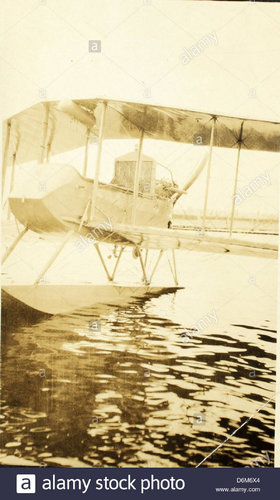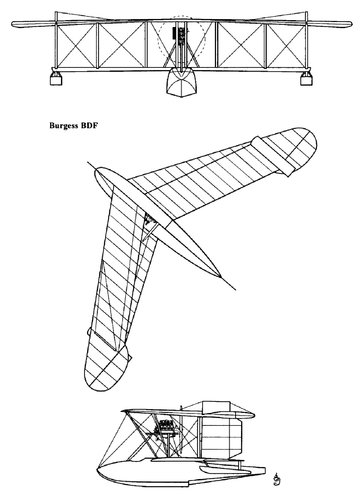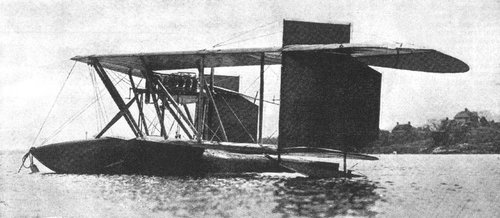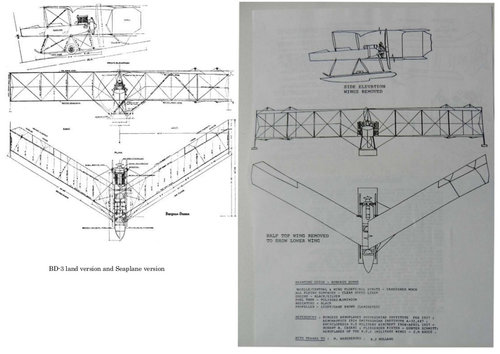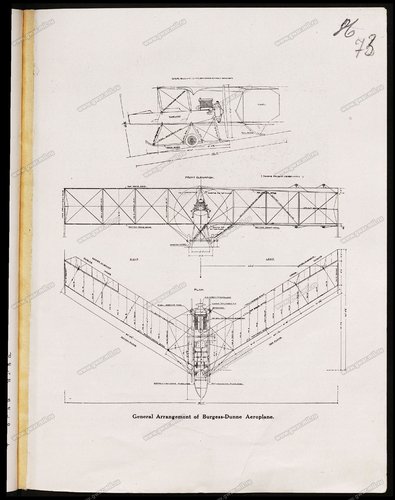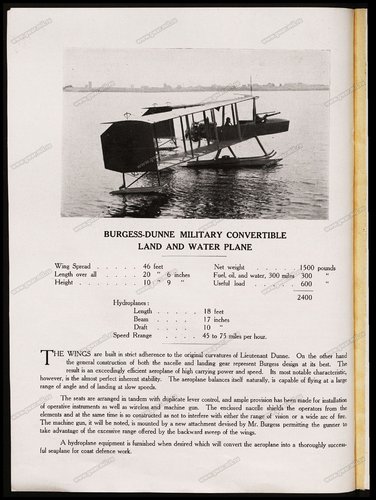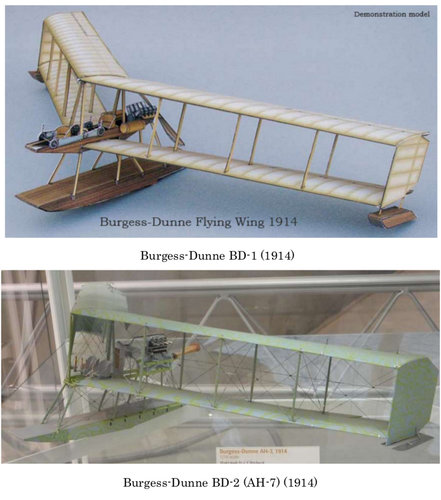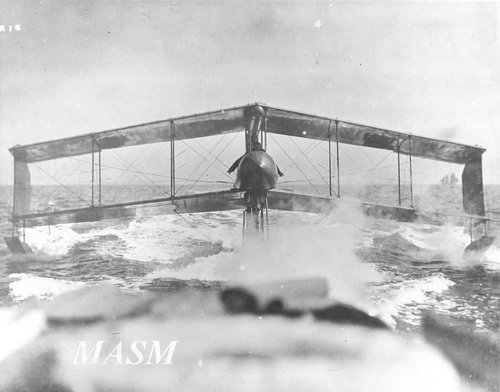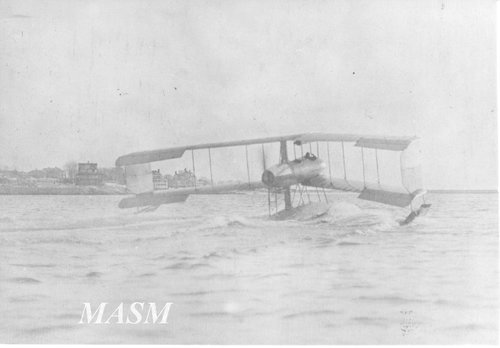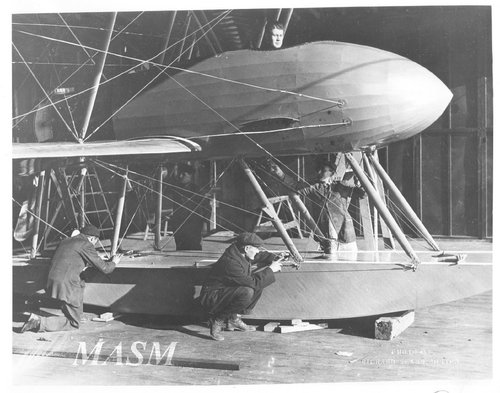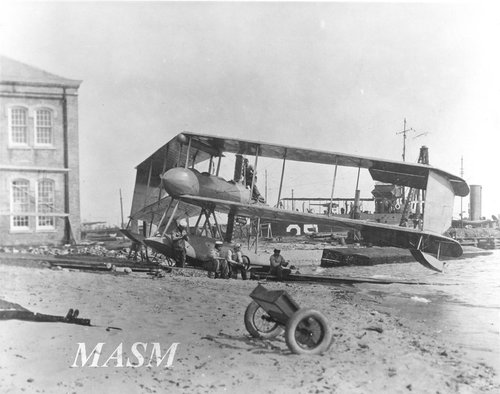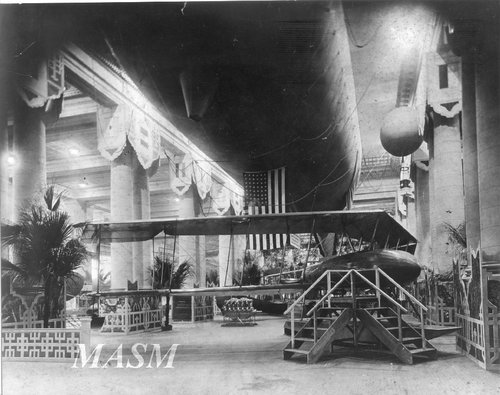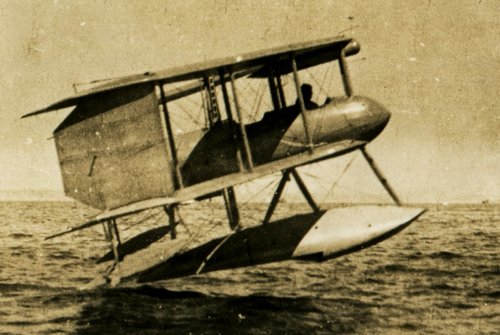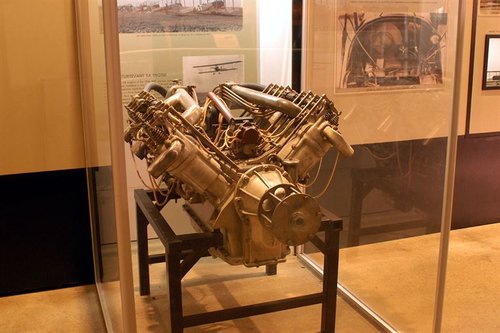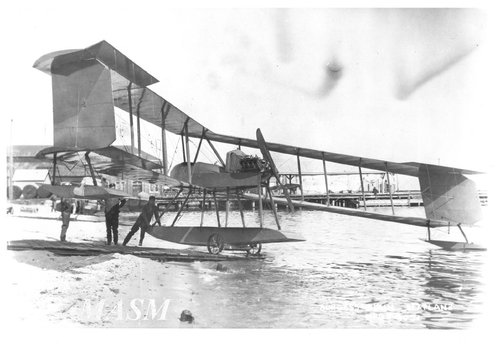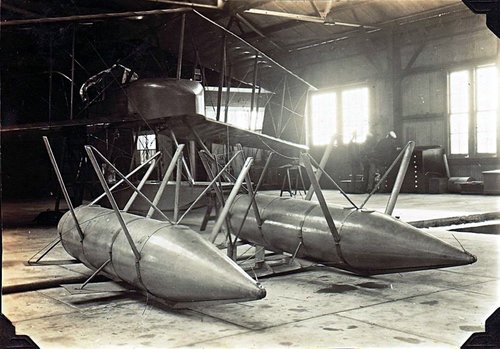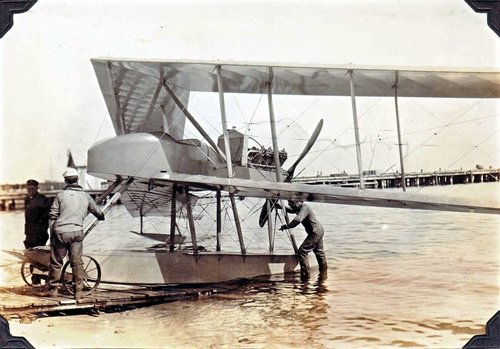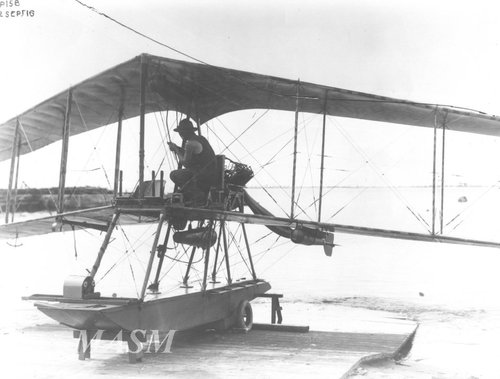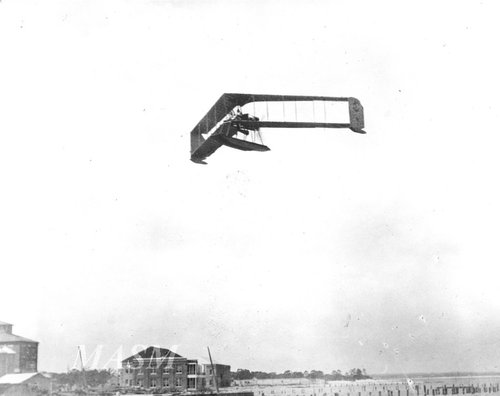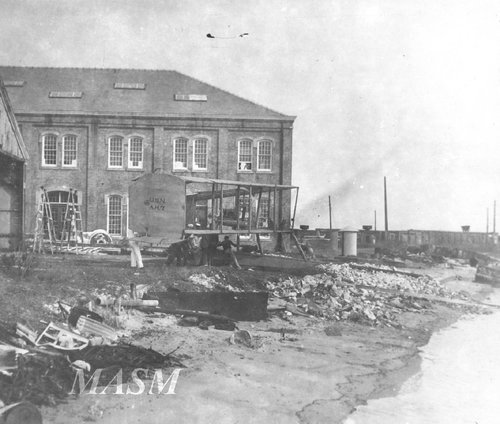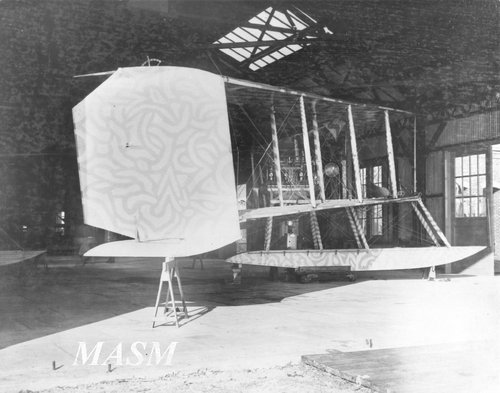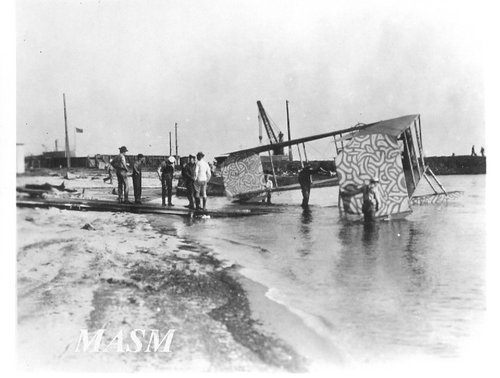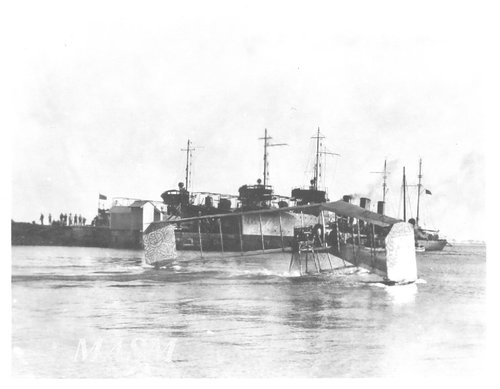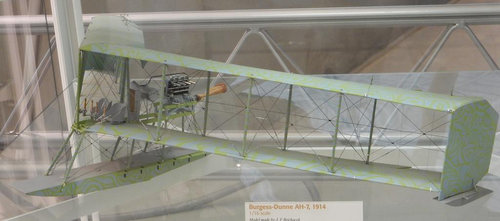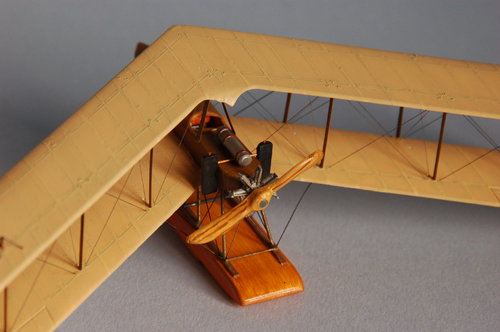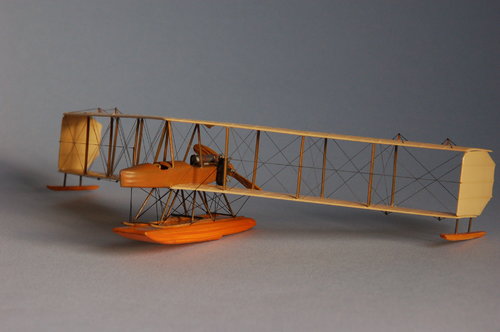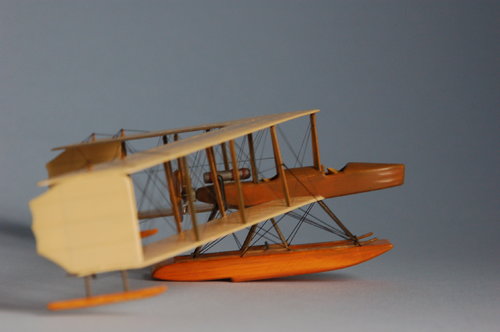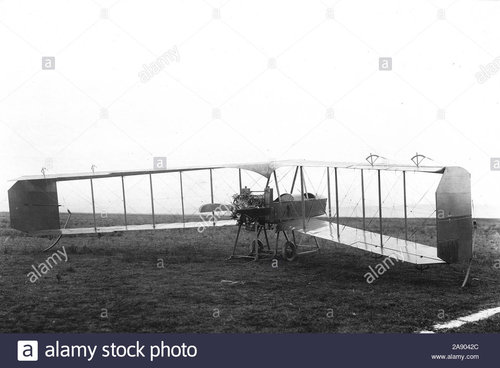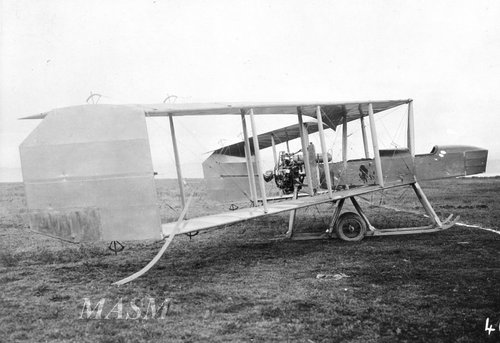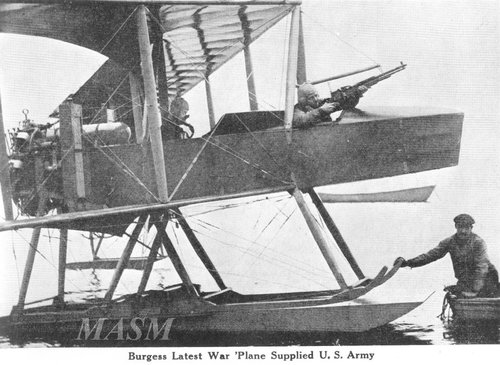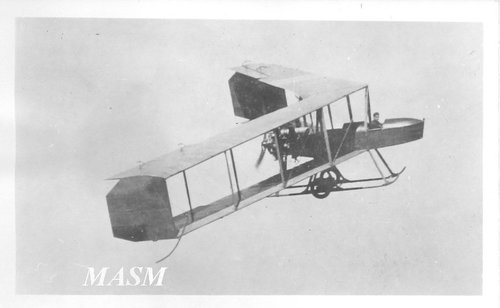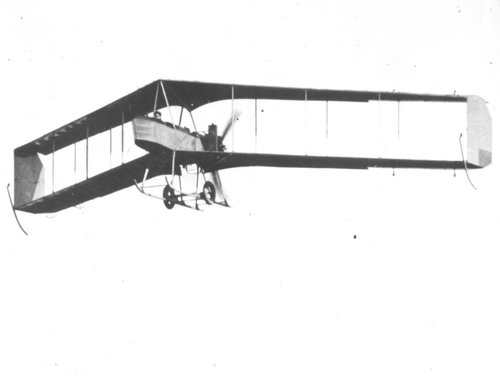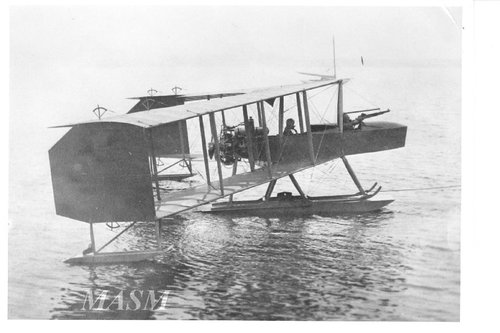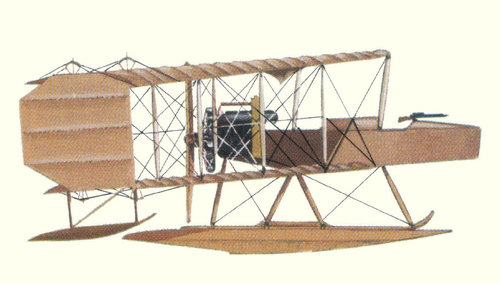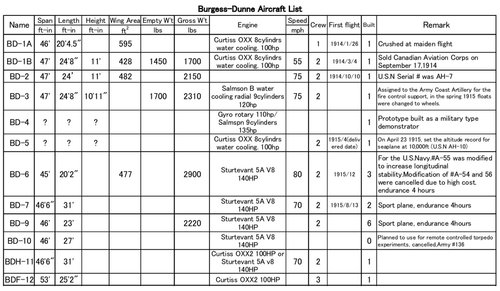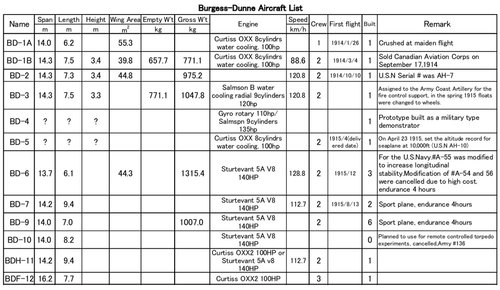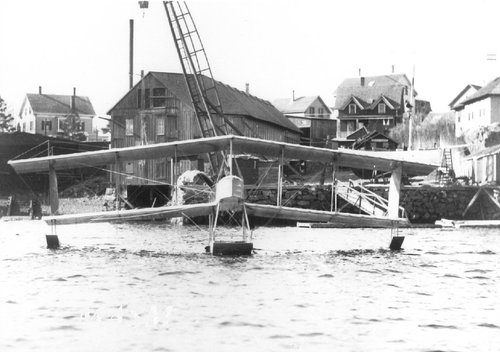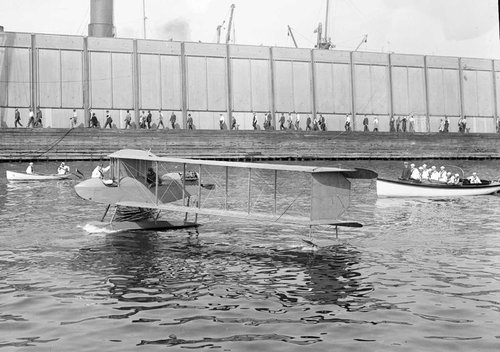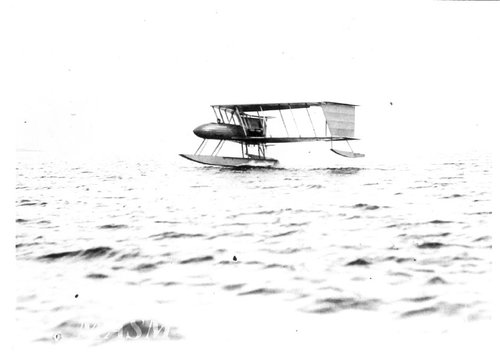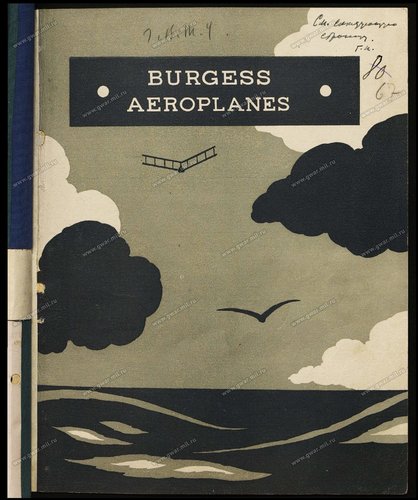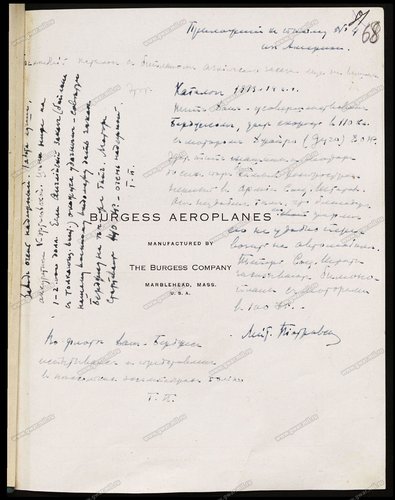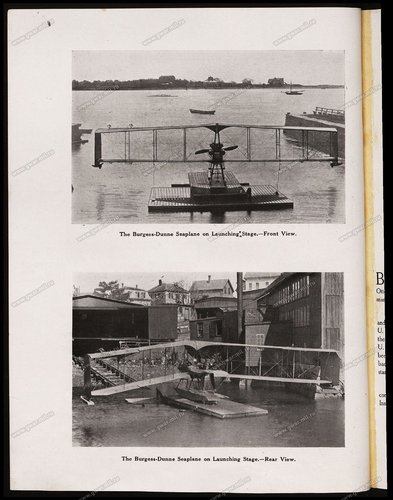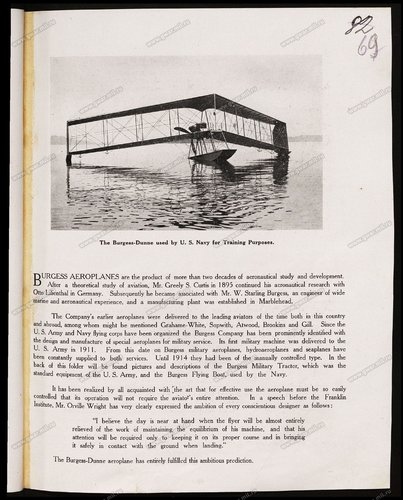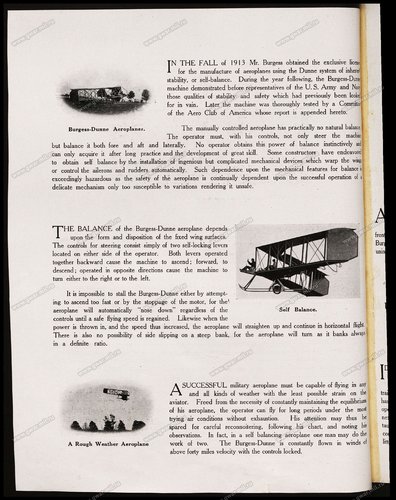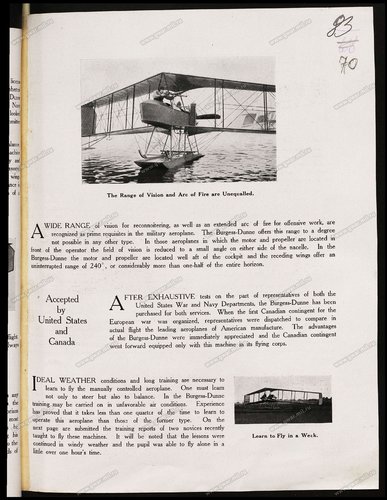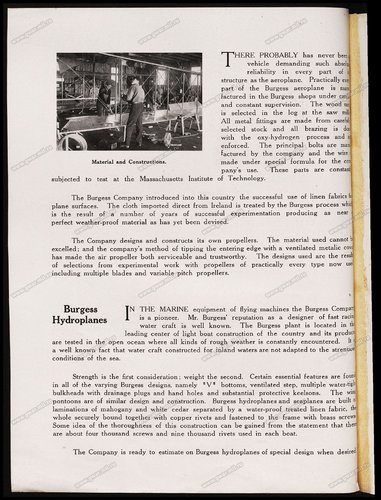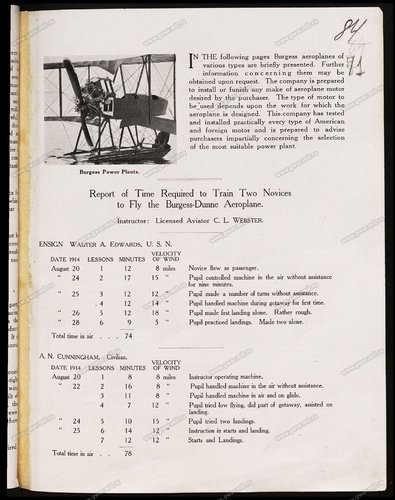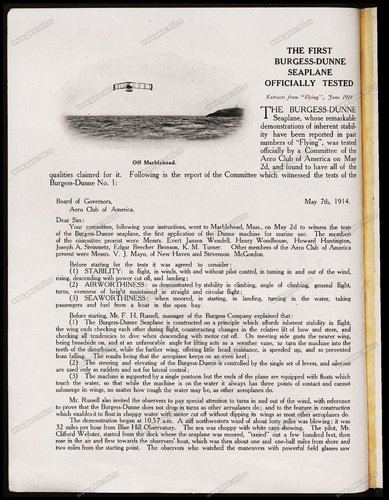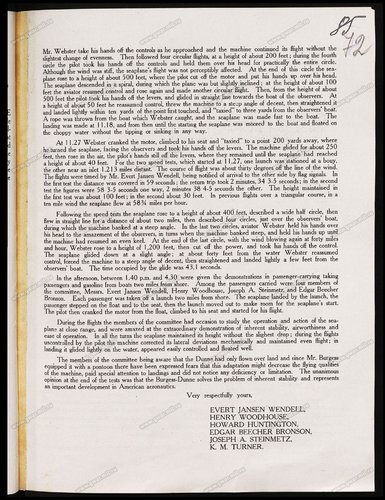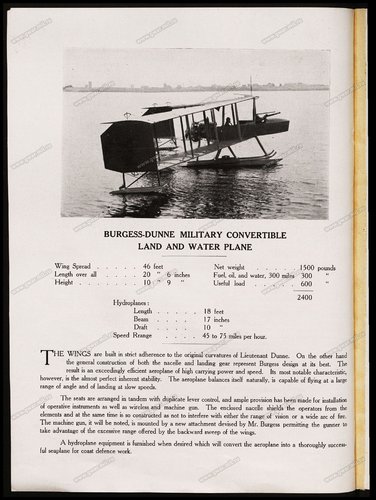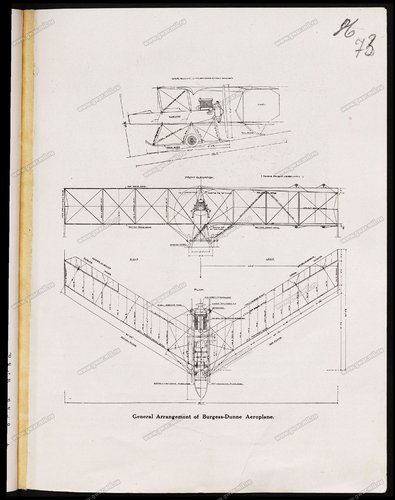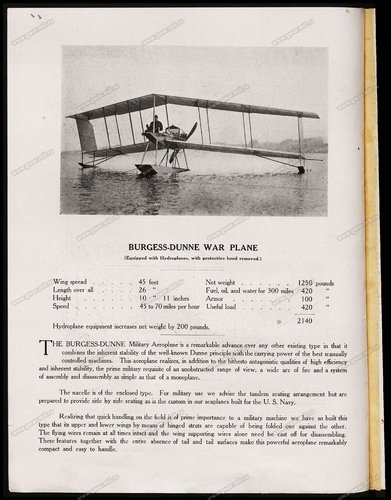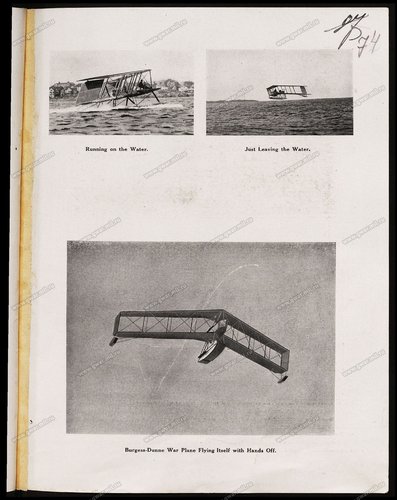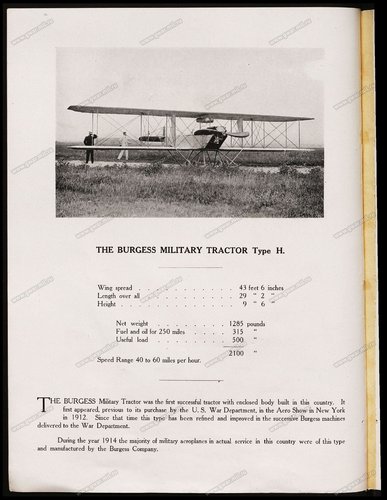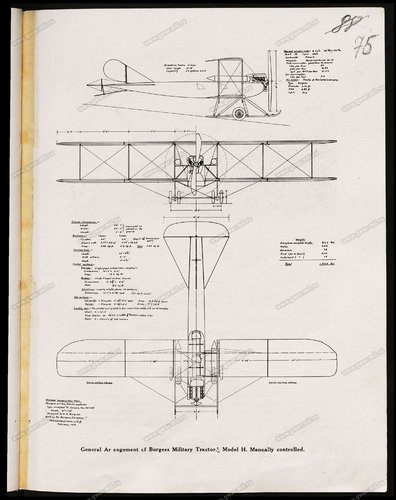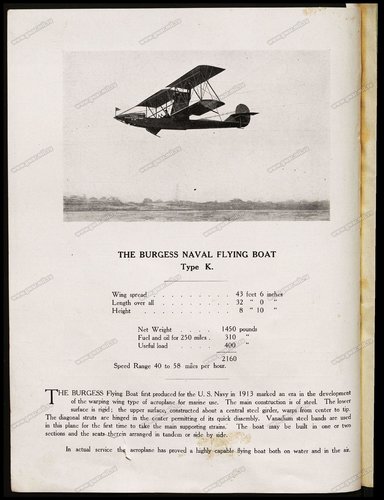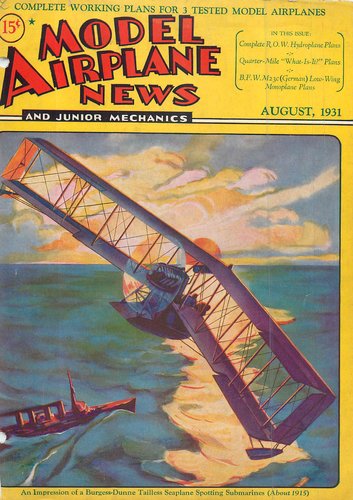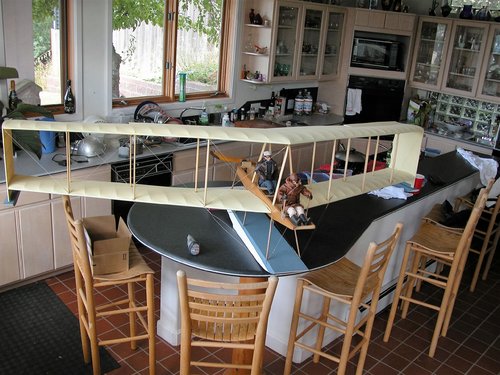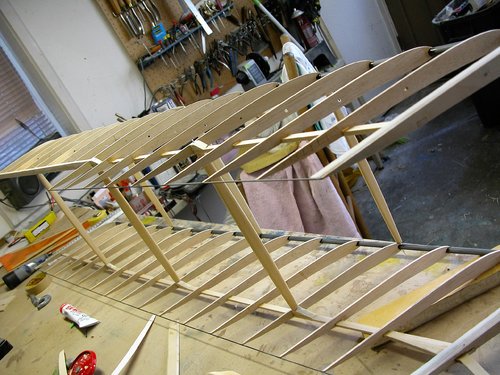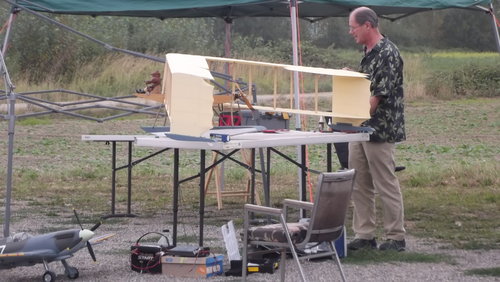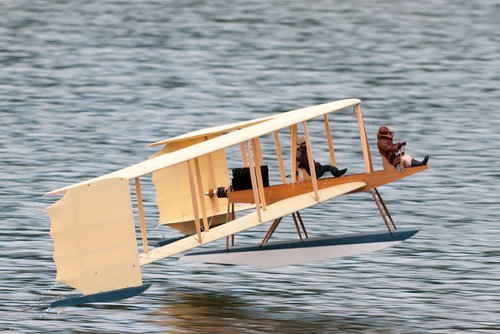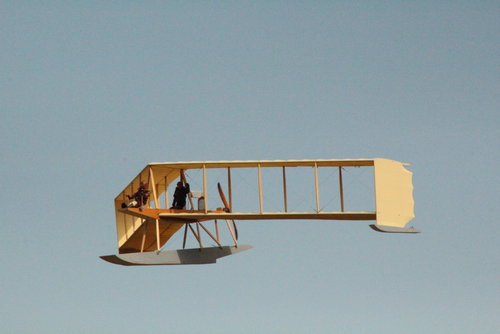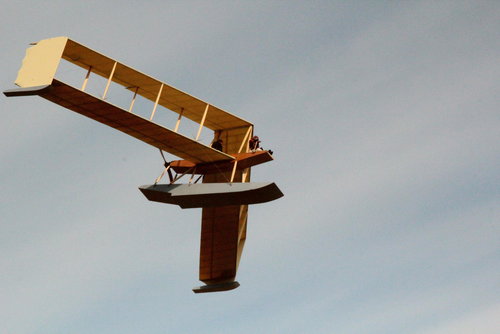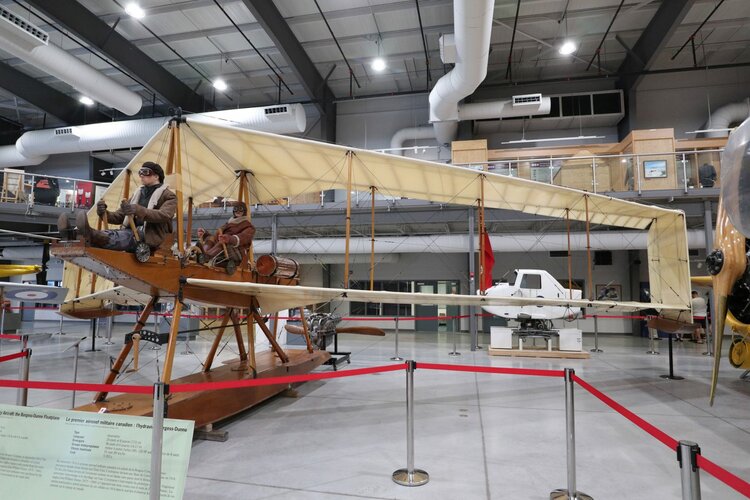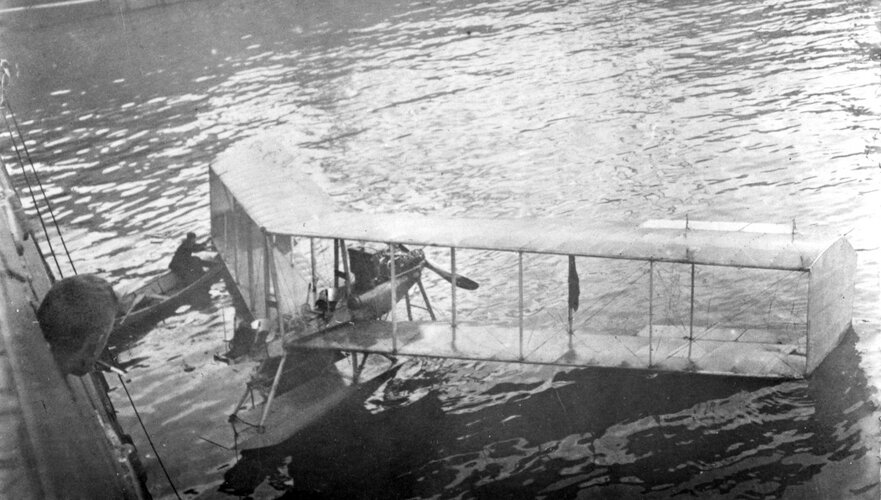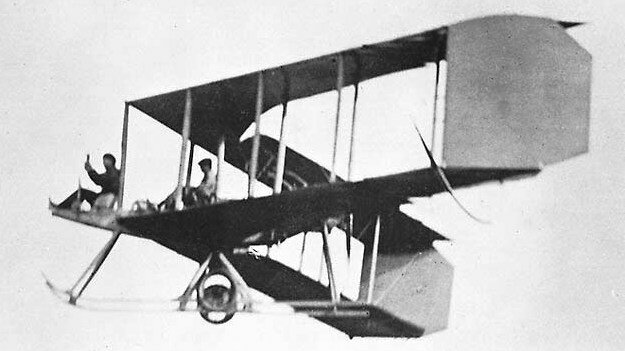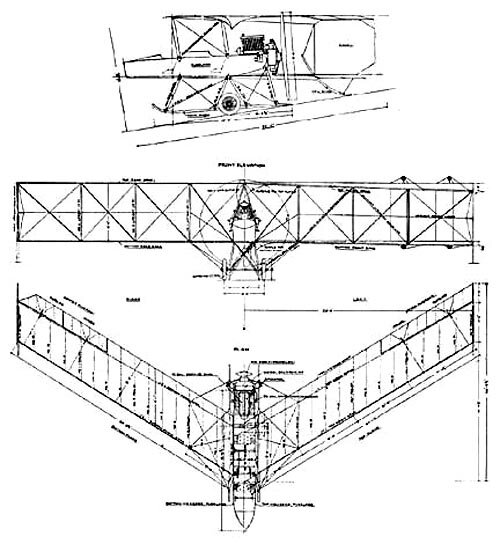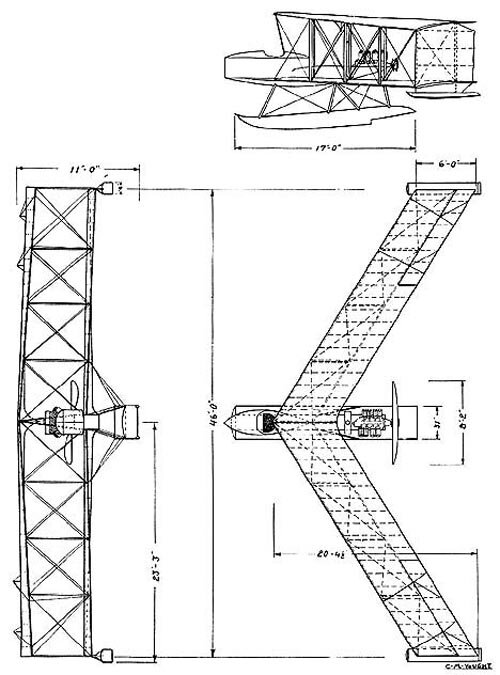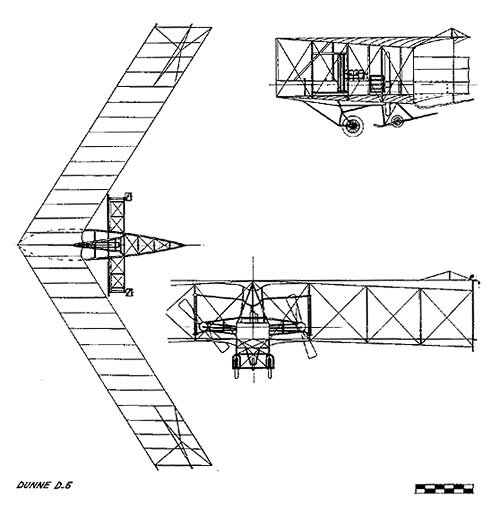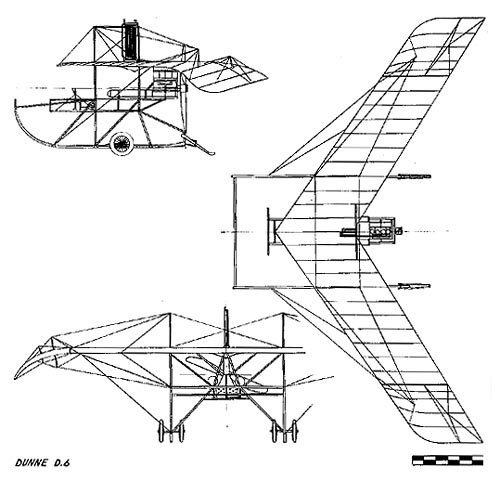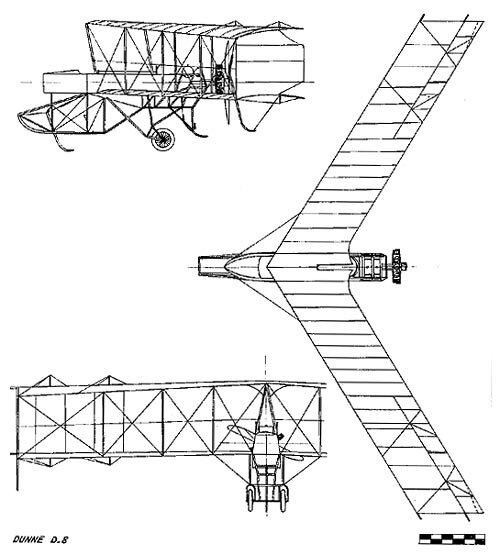Hi! BD-1.
"Model BD–1B
The Burgess Company Burgess D–Dunne Model BD–1B was a two place, tandem, swept wing tailless pusher biplane, built with parts salvaged from the BD–1A crash, but was essentially a new aircraft. Construction was started in February 1914 with its first flight on March 4, 1914 by Clifford Webster.
Modifications included removing the nacelle, creating an open cockpit, adding space for a passenger increasing the span by one foot and the length by for feet four inches. This aircraft was used to train Burgess aviators and for local contract and demonstration flights.
Model BD–1B had a Curtiss OXX 8 cyl water cooled 100 hp engine, an 8'5" two bladed propeller and a speed of 55mph. It had a 4 gallon oil tank and a 22 gallon gasoline tank. Its span was 47', wing area 428 sq ft, chord 6', height 11' and its length 24'8". Its float length was 17'8", width 31" and depth 15". Its empty weight was 1450 lbs and gross weight of 1700 lbs.
It was tested with wheels as a land plane at the leased Harvard Aviation Field, Squantum, Quincy, Massachusetts. Water based testing with a new central float design was held at Marblehead and Salem. It was sold on September 17, 1914 to Captain E. L. Janney for the Canadian Aviation Corps for a price of US $5,000.
It was shipped to North Hero, Vermont by rail and then flown from Lake Champlain to the Province of Quebec. Cliff Webster with Janney onboard made a three day stop at Deschaillons, P.Q. for engine repairs and then flew to the final delivery point at Quebec City. From here the Burgess–Dunne was shipped overseas to England.
The BD–B1 was Canada's first military aircraft. However, after its transatlantic voyage as deck cargo and arriving in England, the BD–1B was set aside, never flown or utilized in any way and eventually scrapped. In 2001 a full scale, authentic model of this Model BD was constructed by Barry MacKeracher of Osgood, Ontario and sold to the National Air Force Museum in Trenton, Ontario.
Model BD–1A Information:
Note: No photos for Model BD–1A
Burgess Company Burgess–Dunne Model BD–1A was a one place swept wing tailless pusher biplane. It was the First Burgess–Dunne type built by the Burgess Company in Marblehead under the patent licensing agreement with John Dunne and the Blair Athol Aeroplane Syndicate Ltd. The first Model BD aircraft was to serve as a test bed seaplane/land version for W. Starling Burgess's planned modifications to the basic Dunne design.
The first model had a nacelle for the pilot and was fitted out to provide for easy conversion from seaplane to land version. Built in late 1913 with a single central float, the Model BD–1 was made ready for its first flight on January 26, 1914 from Marblehead Harbor piloted by Burgess himself.
Model BD–1A had a Curtiss OXX 100 hp engine, a span of 46', wing area 595 sq ft, length 20'4.5", chord 6', gap 6 and a central float length of 17'8.75".
Dual lever controls for elevators/ailerons used both levers back to climb and both levers forward to descend. Lateral control used the same wingtip ailerons/elevators. Banked turns were made by pulling one lever backwards and pushing the other forward. A left hand turn was made by pulling the left hand lever back and pushing the right hand lever forward.
The BD–1A's maiden flight on January 26, 1914 by W. Starling Burgess resulted in an aborted takeoff run due to his "running out of harbor", and pulling back the levers to the stops. The Burgess–Dunne pitched up steeply, stalling and coming down hard on the rear of the float resulting in a crash among the ice floes which severely damaged the aircraft. The damage was so extensive that the first BD–1 was completely rebuilt as BD–1B.
This model BD–1A was the first of 26 Burgess–Dunne aircraft built. Burgess sold 24 BD hydroaeroplanes and 2 were destroyed in test flight crashes at Marblehead. Burgess aviator Clifford Webster had the distinction of flying every Burgess–Dunne built and is the source for the total production and loss numbers."
https://www.massairspace.org/virtualexhibit/vex2/7DD66070-76AE-429C-8202-462854531710.htm

![Burgess-Dunn-BD-2-Seaplane-[Spidle-Col]-adj.jpg](/data/attachments/173/173163-a6ac9a33b07d5fe983f4ba75bf523baf.jpg)
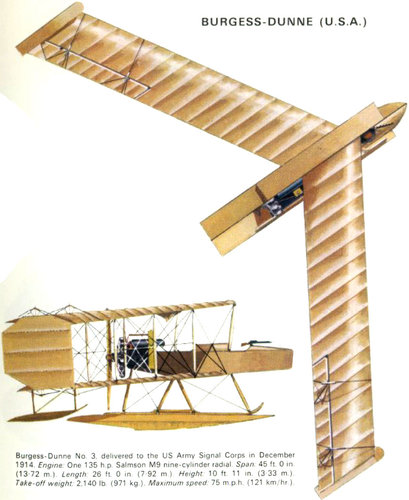
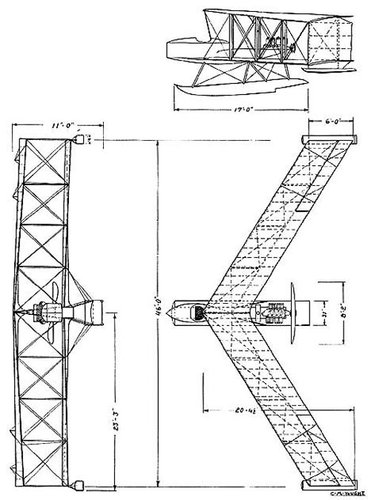
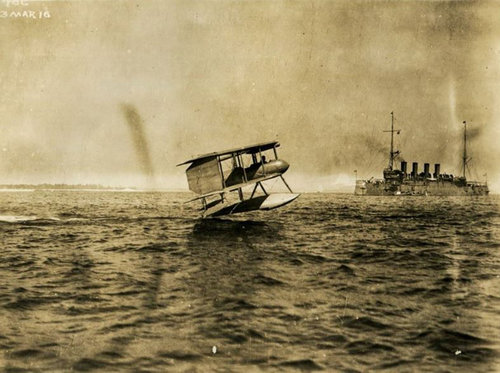
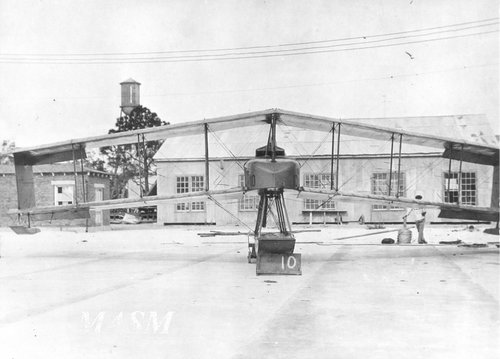
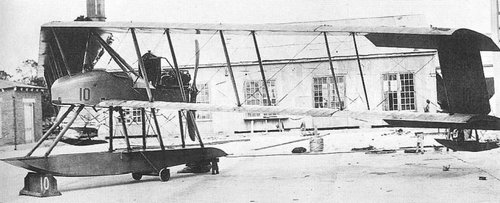
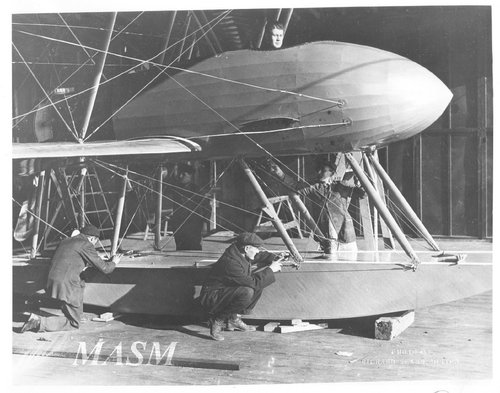
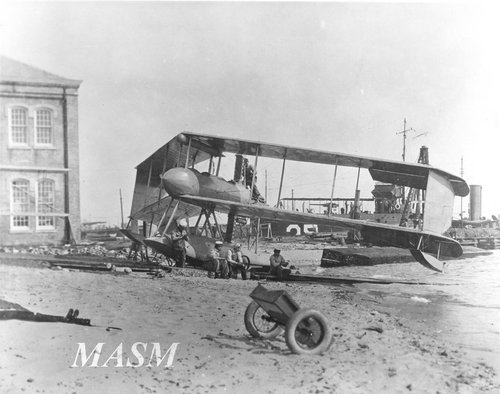
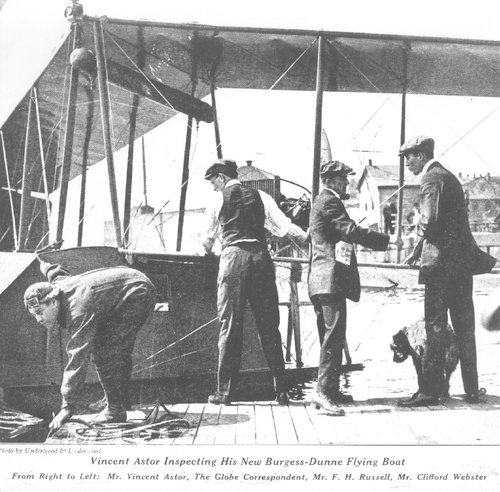
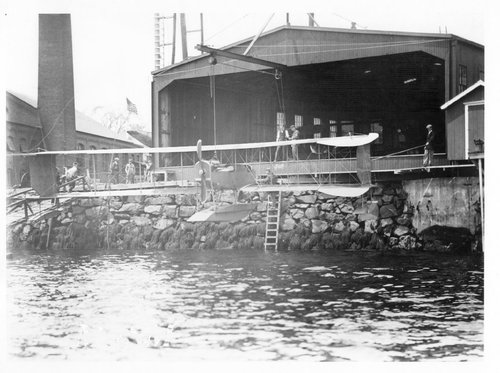
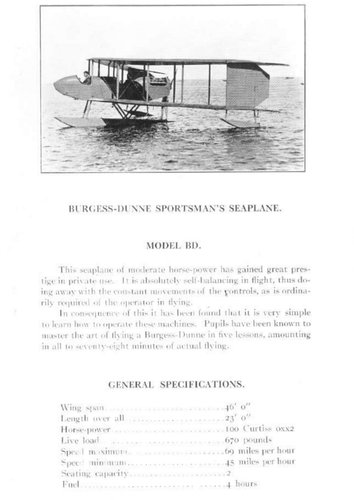
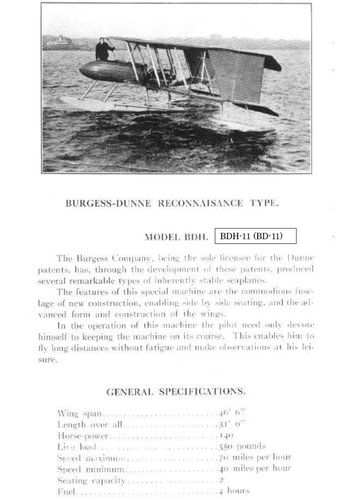
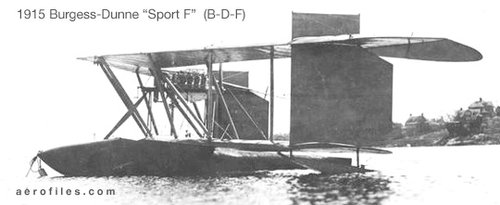
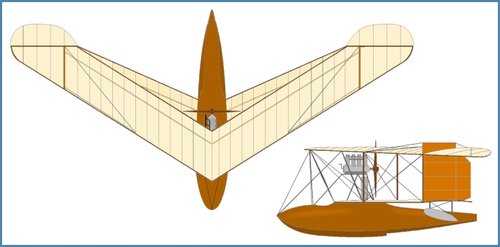
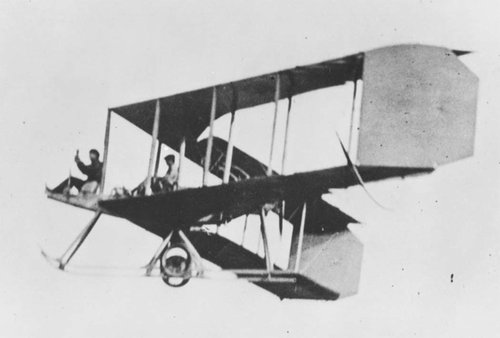
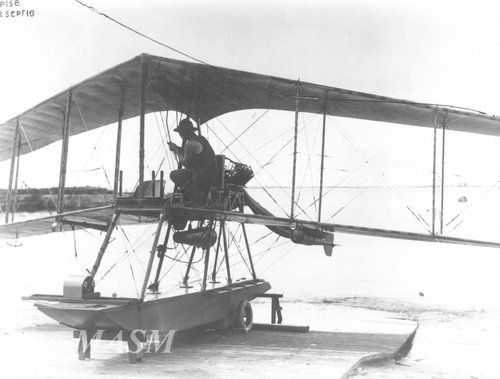
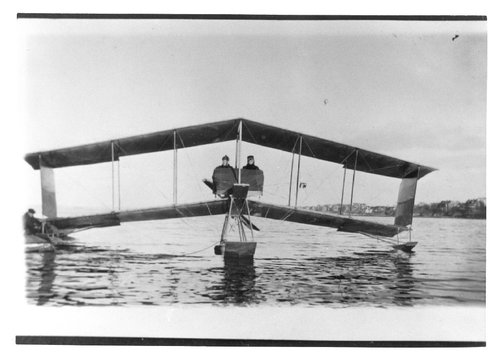
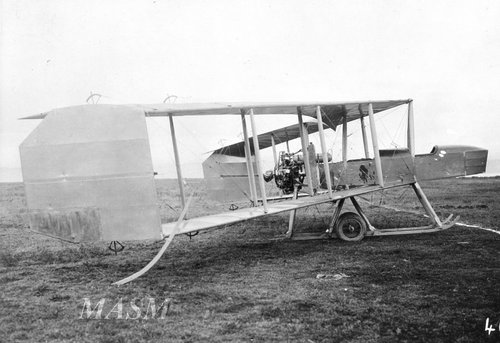
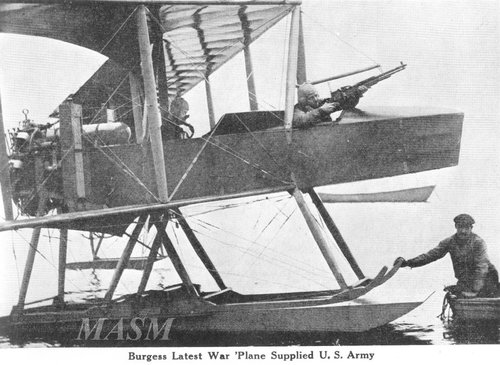
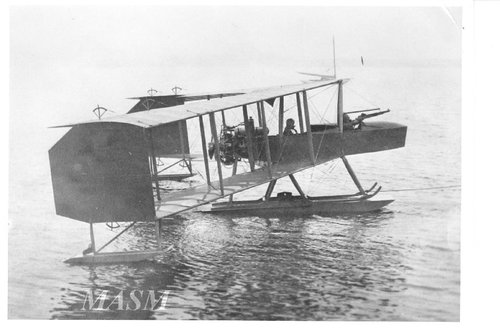
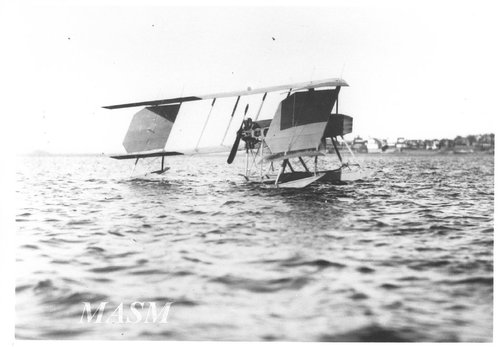
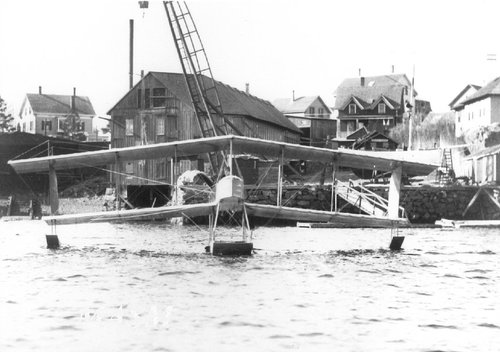
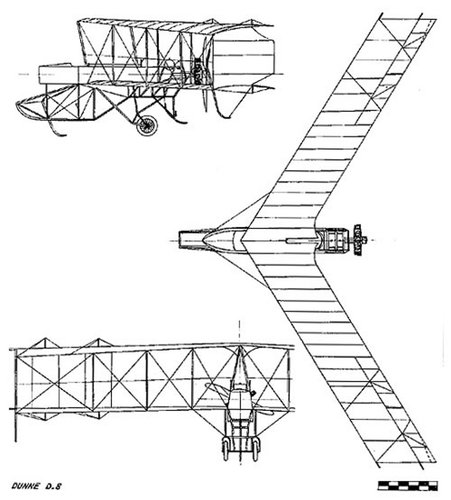
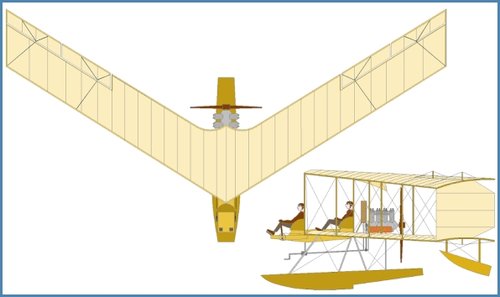
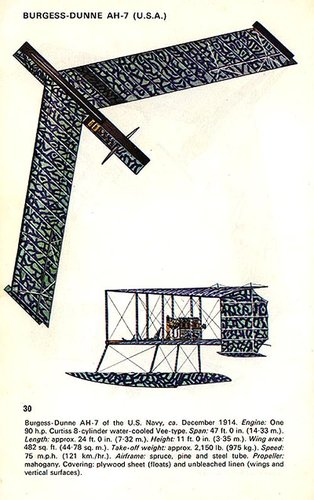
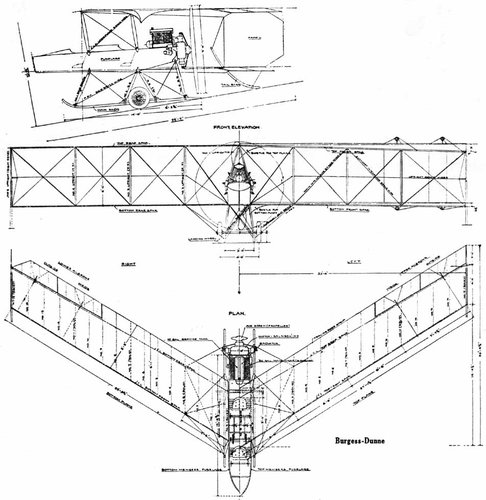
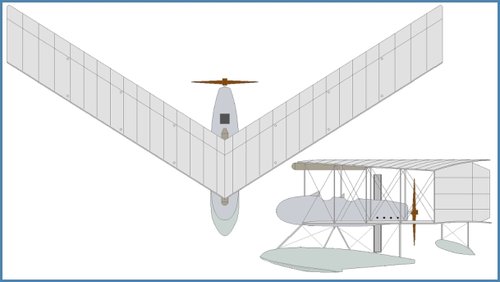
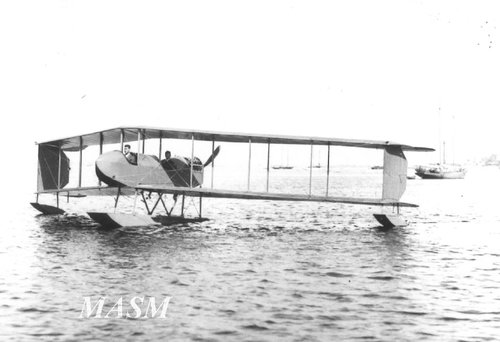
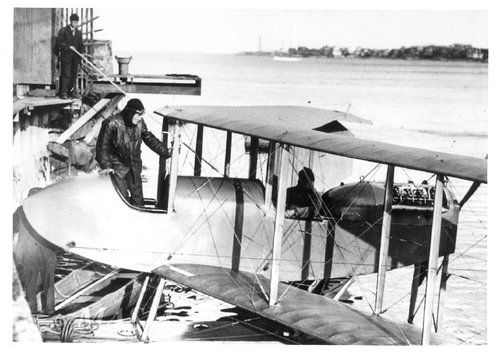
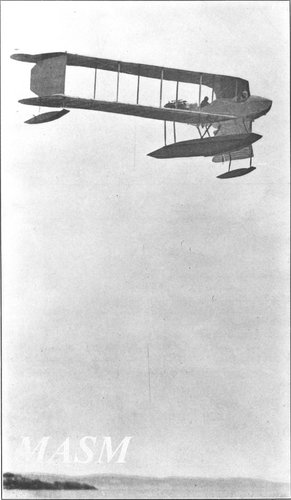
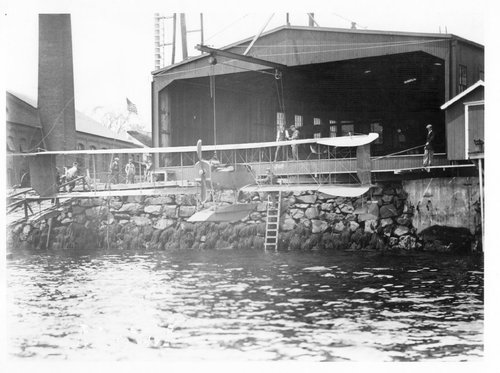

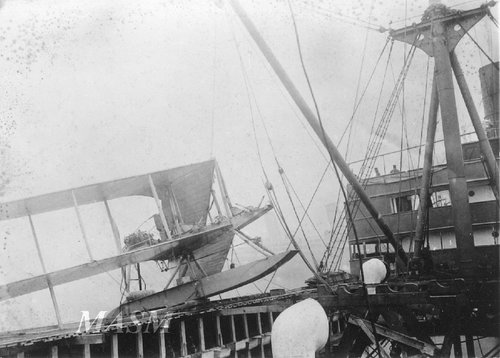
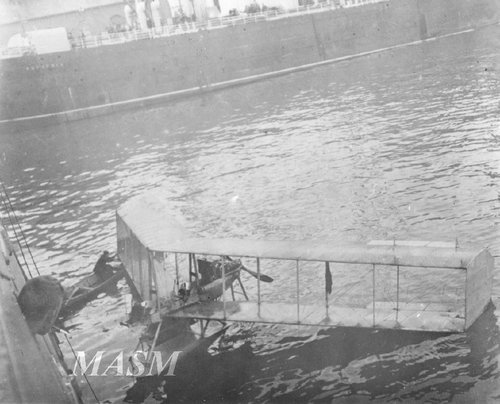
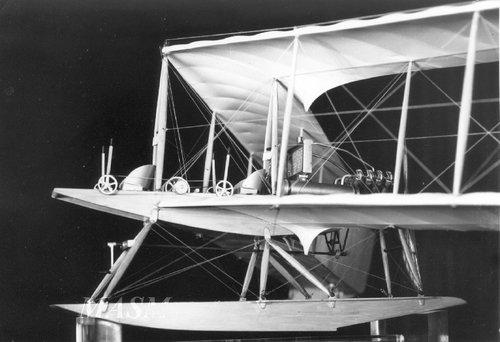
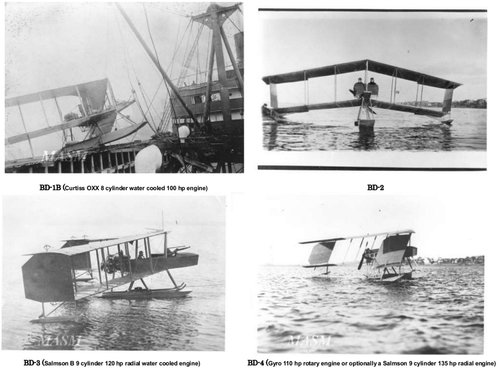
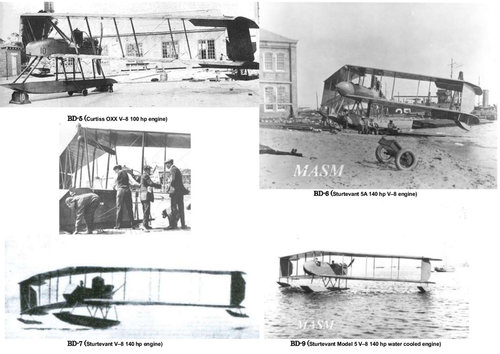
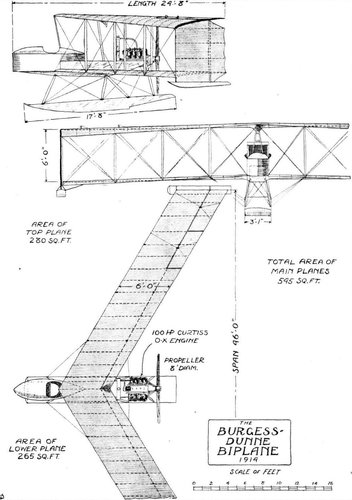
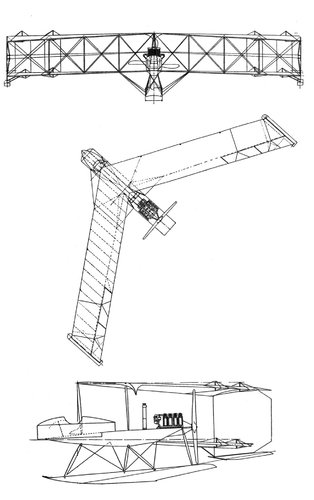
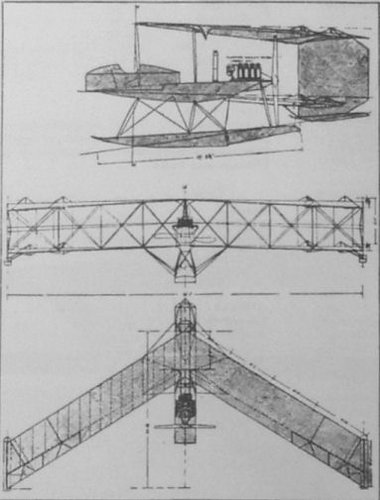
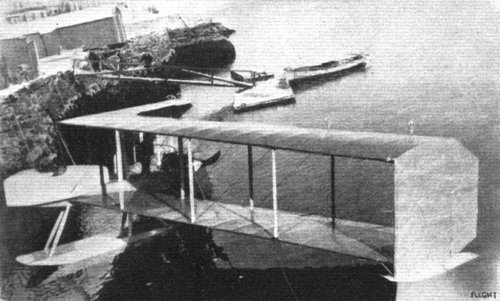
![646-1[1].jpg](/data/attachments/173/173744-80e505ad6af71a64079b53d7af5ffc0a.jpg)
